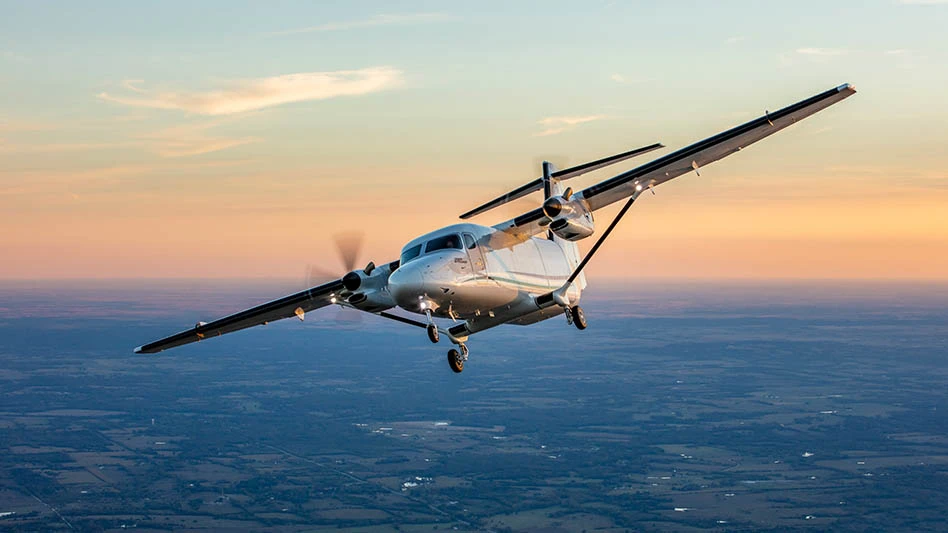Rolls-Royce North America has opened its second outdoor jet engine test stand, an investment of $50 million, at the Rolls-Royce Outdoor Jet Engine Test Facility at NASA John C. Stennis Space Center in Hancock County, Miss.
This expansion will result in 35 new, high-tech positions for the State of Mississippi and mark a total investment of nearly $100 million when the second test stand is fully operational.
Rolls-Royce North America first opened its outdoor jet engine testing facility at Stennis Space Center in 2007. The company employs over 150 people in the state at this facility and two others.
"Our decision to first build, and now expand, the Rolls-Royce Outdoor Jet Engine Test Stand here at Stennis embraces the spirit of partnership with the State of Mississippi. This relationship continues to grow, which is a direct result of a very positive public-private partnership." says James M. Guyette, president and CEO of Rolls-Royce North America.
The new jet engine test stand will play a key role in the company’s development of next-generation technology. The site conducts jet engine testing – including noise, crosswind, endurance, and other tests – on Rolls-Royce civil aircraft engines, including the Trent 1000 that powers the Boeing 787 Dreamliner and the Trent XWB that powers the Airbus A350 XWB.
Trent 1000 Test Engine Goes to the INFINITY Science Center
In related news, Rolls-Royce is donating a Trent 1000 test engine to the INFINITY Science Center, located near the Stennis Space Center. The purpose of this donation is to excite science center visitors in STEM (Science Technology Engineering and Mathematics) careers by showing them the marvels of modern aviation engines.
"We hope that visitors, young and old, will be inspired by the wonders of aviation, engineering and what it takes to build the cleanest, quietest, lightest and most efficient jet engines used in modern aviation today." says Anthony Woodard, general manager, of the Rolls-Royce outdoor jet engine testing facility.
Opened in 2012, the INFINITY Science Center features exhibits and programs about the Earth, its oceans and rivers, and space. Its goal is to inspire young minds to be a part of the nationally-critical research and technology being developed along the Southern Louisiana, Mississippi, and the Alabama Gulf Coast.
John Wilson, INFINITY’s executive director says of the center’s new exhibit: "Imagine standing almost inside a 9ft, state-of-the-art aircraft engine. Unless you’re an aerospace engineer or an aircraft mechanic, that’s something you just can’t do anywhere else."
This particular engine was used in the development of the Rolls-Royce Trent 1000 program. The Trent 1000 engine is designed to power all members of the Boeing 787 family (-8, -9 and -10) and will be certified up to 76,000 lb of thrust with the capability of delivering 78,000 lb. The first flight test of the Boeing 787-9, powered by the Trent 1000, took place on Sept. 17, 2013, in Seattle, Wash.
The donated engine is known as "Engine - ESN 10017." Built in Derby, UK, after a series of preliminary tests, it was transported 4,500mi to the Rolls-Royce jet outdoor test stand in Mississippi, where it underwent analyses for flutter, crosswind, and noise testing. It later returned to the UK for more tests before successfully providing the company the test data needed to be certified. It amassed over 467 hours and 988 cycles. Now retired, the engine is on display at the INFINITY Science Center.
Additional Facts about the Trent 1000 program
- The Trent 1000 hollow titanium fan is more than 9ft across and sucks in more than a ton of air every second at take-off – that’s a racquetball court’s worth of air per second.
- The blades are engineered to deal with immense forces – equivalent to the weight of a freight train at take-off.
- The blade tip travels at more than 900mph – faster than the speed of sound.
- Each high pressure turbine blade produces more than 800hp – the same as a NASCAR engine.
- The temperature inside the hottest parts of the engine reaches a level approaching half as hot as the surface of the sun.
- Despite all this power, a Trent 1000 on take-off is at least 3dB quieter than the previous generation aircraft.
Source: Rolls Royce
Latest from Aerospace Manufacturing and Design
- The Partner Companies acquires Precision Eforming
- Hall Effect angle sensors
- July is for learning – so drop in for this month’s second Manufacturing Lunch + Learn
- Essential strategies to protect your data
- NASA selects instruments for Artemis lunar terrain vehicle
- Twin-cutter boring head
- Bell awarded funding for X-plane build phase of SPRINT program
- Shaft coupling clamps





